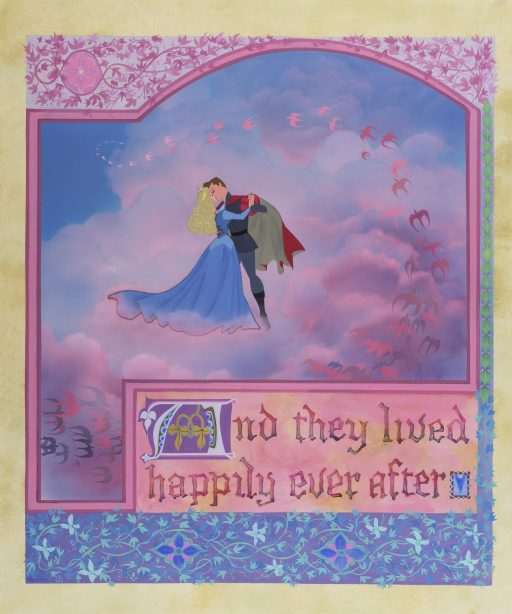In the mid-1950s — as scaffolding rose on Disneyland and Walt Disney further became a household name for TV viewers across the country — work was underway on Walt Disney Animation Studios’ next major fairy tale: 1959’s Sleeping Beauty, which celebrates its 65th anniversary on Monday.
“Today, Sleeping Beauty is considered one of the most artistically-acclaimed and important films ever produced by the animation industry,” says Rebecca Cline, director of the Walt Disney Archives.
The movie includes memorable characters such as Sleeping Beauty herself Princess Aurora, the three Good Fairies, and the film’s villain, Maleficent, who, Cline noted, “is a masterpiece of animation design.”
“Her transformation into a magnificent dragon for an epic battle with Prince Phillip is a highlight,” she added.
To set Sleeping Beauty apart from past animated efforts, Walt wanted “the feel of a ‘moving illustration,'” Cline said.
She pointed out that Walt “gave unprecedented control of the film’s visual appearance to future Disney Legend Eyvind Earle, as both de facto art director and color stylist. The result is a film notable for its distinctive and beautiful art direction, which is instantly recognizable to Disney fans.”
Cline went on to say that Earle “chose to give the film a fantasy medieval feel.” His work on the visual identity of Sleeping Beauty includes the iconic prop storybook, which can be seen throughout the film.
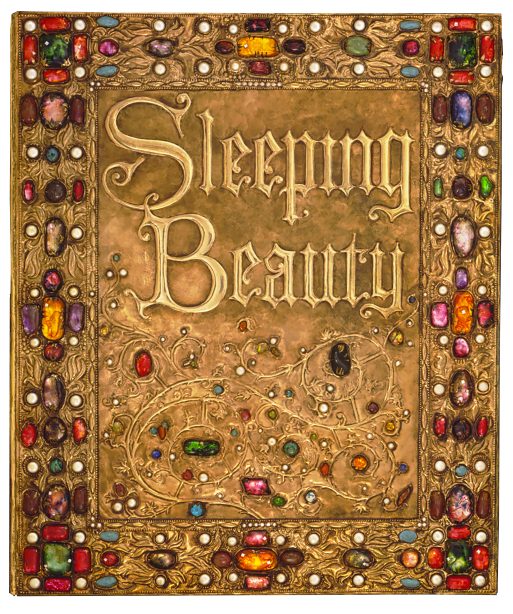
“The result is a magnificent prop storybook styled to look like a medieval illustrated manuscript including original hand-painted art and hammered brass and ‘jeweled’ cover,” said Cline. “Inside the book are multiple pages hand-painted by Eyvind, inspired by the pre-Renaissance European illustrated religious manuscripts.”
That prop book has become a “crown jewel” of the Walt Disney Archives, according to Cline.
“We felt it was very important to preserve and protect this very iconic and beloved asset,” she said.
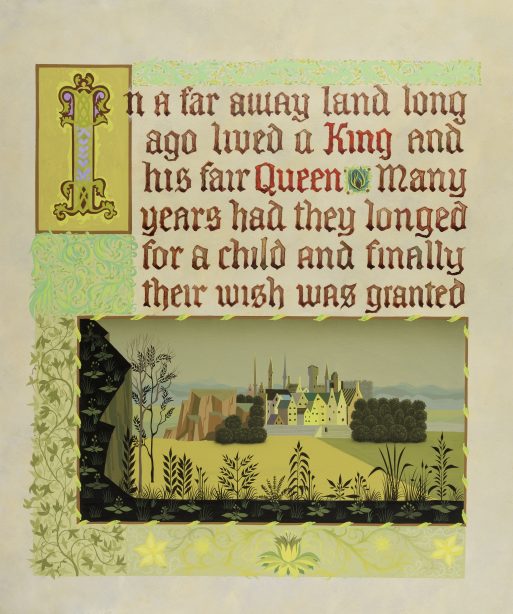
Usually “In film, props, costumes, and sets… are only needed for a short time, so they are made to look great during filming, but are not always designed or made with the care for a lasting product,” Cline said. “In the case of the Sleeping Beauty prop storybook, a plain oversized bound journal was used as a base and covered and painted to look medieval. Inside, the original art was glued onto the pages of the journal for support. Over the years the delicate book began to deteriorate due to the non-archival materials originally used and it was no longer able to be exhibited or even carefully opened for reference.”
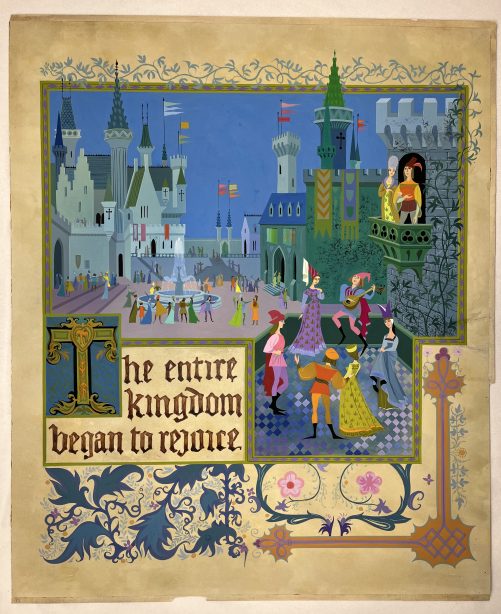
The storybook — as Earle designed it — has since been restored and has regular conservation checks. However, Earle’s artwork for Sleeping Beauty wasn’t only featured in the film.
“When Disneyland opened in 1955, its centerpiece was a fairytale castle, and as Sleeping Beauty was in production, Walt decided to deem it Sleeping Beauty Castle and guests fell in love with it — regularly requesting to go inside,” Cline noted. “So, in 1957, before the film even opened, the interior of the castle was crafted into a walk-through attraction where guests could experience the story of the film through beautifully crafted dioramas, including murals painted by Earle.”
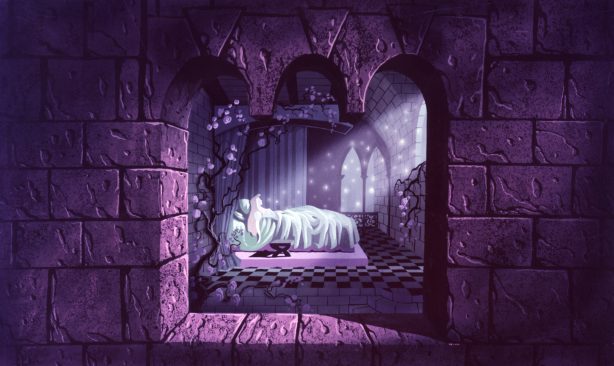
Production elements from Sleeping Beauty were even featured in a 1958 traveling exhibition called “The Art of Animation,” which showcased the animation process and “was so beloved that following its tour, a unit of the exhibition was installed in Tomorrowland at Disneyland where it ran from 1960 to 1966 — giving guests a very special peek ‘behind the magic,’” Cline said.
The characters of Sleeping Beauty have continued to breathe life into new stories at Disney, including the popular live-action adaptation Maleficent, released in 2014, and its sequel Maleficent: Mistress of Evil in 2019.
While Sleeping Beauty fed into various parts of the company before it was even released, it’s also enmeshed itself into American culture.
Cline pointed out that “In 2019, this treasured film was selected for preservation in the U.S. National Film Registry as ‘culturally, historically, or aesthetically significant,’ but more importantly, it has enchanted millions of Disney fans who have taken it into their hearts.”
